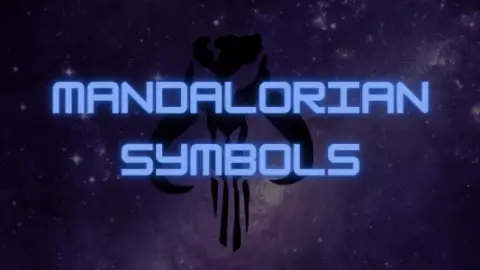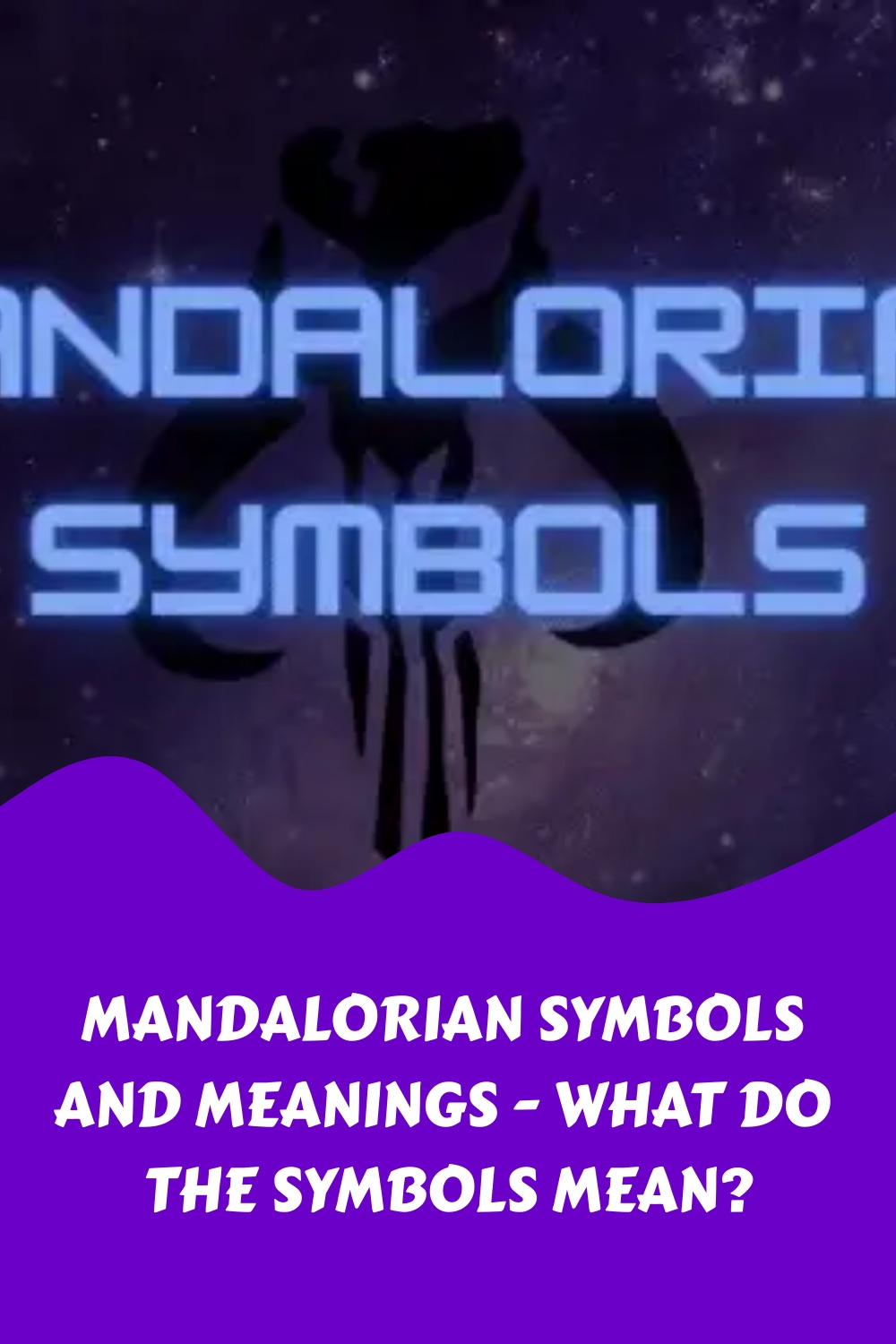Within the Star Wars universe, the Mandalorians are an ancient culture, steeped in warring tradition and culture. Much of this was developed within the pre-Disney Expanded Universe through comics and novels. Two animated series, Clone Wars and Rebels, kept alive the symbols and lore of the Mandalorians once the Disney purchase of Lucasfilm reset the timeline of the Star Wars franchise.
But there was even more to come once Disney+ at last began streaming the long-awaited “Boba Fett project,” which rose from development hell as The Mandalorian (and, soon, The Book of Boba Fett.)
With renewed interest in Mandalorians thanks to Mando and his new friend Boba, the icons of this fascinating culture are making their way to merchandise, cosplay, and laptop stickers. Let’s get to know them better. What do the Mandalorian symbols mean?
Mandalorian Crusaders

Part of the look of the Mandalorian armor—the knight-like suit, the T-cross visor—owes a great deal to medieval Europe and the Crusades. So it makes sense that the Mandalorian Crusaders draw their name from these noble soldiers.
The Mandalorian Crusaders, the first Mandalorians we know of, are the root of the historical conflict between Mandalorians and the Jedi. They were founded by Mandalore the First at least 24,000 years before the Battle of Yavin. Mandalorian Crusaders carried swords, and, it is said, sometimes rode basilisk war droids.
Much of what we know about the Mandalorian Crusaders comes from the Expanded Universe, but hints of them show up in canon as well. Cubist-style murals in the royal palace of Mandalore featuring Mandalorian Crusaders were apparent two episodes of Clone Wars. In addition, the honor code by which Din Djarin’s clan (Children of the Watch) lives is apparently based on the creed established by Mandalore the First.
According to non-canon material, The Crusaders were warlike, seeking to conquer other worlds. Combat was a religious exercise, and their weapons were consecrated. Originally, the Mandalorian Crusaders forced their ways on those they had conquered, but this rigidity was soon relaxed to allow Mandalorians to choose their way of life. These early Mandalorians, over time, developed the Canons of Honor and the Resol’nare (the Six Actions), guiding principles of Mandalorian culture and life.
The circle symbol of the Mandalorian Crusaders is similar to Christ’s Crown of Thorns from Christian culture, a direct line to the real-life, original Crusaders. Within the Star Wars universe, the jagged, sharp edges of the serpent-like circle bring to mind the spikes and horn-bearing designs of early Mandalorian armor. The points of the ring stand for the Mandalorians’ weapons; the circle is meant to represent cycles of power and war, as well as the responsibility of new generations to perpetuate Mandalorian tradition.
The Mythosaur
The Mythosaur logo is perhaps the most recognizable icon from The Mandalorian. It is prominently featured over the forge entrance in the underground home of the Children of the Watch, and Kuill name-drops “the great Mythosaur” in Episode One. At the end of Season One, we see Grogu clutching Din Djarin’s own Mythosaur pendant.
Legend has it that Mythosaurs once roamed the planet of Mandalor and that early ruler Mand’alor the First charged early settlers with hunting them. An early form of the Mythosaur skull began to appear superimposed over the Crusader barbed circle.
Within the Star Wars universe, this icon began showing up in comic books as early as 1977 and made its most famous appearance on Boba Fett’s shoulder plate. The symbol appeared in video games.
Jaig Eyes

Fans of Clone Wars are familiar with the modified Jaig Eyes (jai’galaar’la sur’haii’se in the language of the Madalorians) painted on Captain Rex’s helmet—one of the best examples of cultural cross-influences in the Star Wars universe. In Rebels, Kanan Jarrus also wore Jaig Eyes on his face shield after he was blinded. Since non-canon background information suggests that Mandalorians were involved in Clone training, fans explain Rex’s helmet decoration as a gift from a mentor.
The Mandalorian term translates to “shriek-hawk eyes” and refers to a native hawk of Mandalore and other planets of the Outer Rim. The mark is colloquially referred to as “Jaig.” This helmet sigil, or sign, was granted by Mandalorian clan leaders as an honor, conferred for bravery in battle.
Like, many of Dave Filoni’s productions, the Jaig’s off-screen origins are rooted in early Star Wars designs. Initial prototypes for Boba Fett’s helmet in The Empire Strikes Back carry Jaig-like marks. They were also mentioned in a 2006 issue of Star Wars Insider.
Death Watch/Clan Vizla
Sharp-eyed fans of The Mandalorian who were also familiar with Clone Wars and Rebels were stunned to see a distinctive symbol on the armor of a Mandalorian who rescued a young Din Djarin during the Clone Wars. It was the sigil of Death Watch, a separatist group that joined with Darth Maul to depose the pacifist government of Duchess Satine Kryze.
Although Din has not been seen wearing the sigil himself, fans were unsettled to consider the possibility that this stylized shriek-hawk suggested that he was influenced by the ways of Death Watch. The title of his clan, Children of the Watch, hints that it’s a splinter of the original group, which broke apart after Darth Maul came to power in Mandalore.
The Death Watch symbol was adapted from Clan Vizla’s family sigil. This came about when Pre Vizsla became its leader; he was eager to reinstate Mandalore’s warlike ways. For a time, Pre Vizsla held the Darksaber, a Jedi-Mandalorian weapon, before it was claimed from him by Darth Maul. The Darksaber played a significant role in the Season 2 finale of The Mandalorian and the child.
Over time, the Death Watch symbol has carried both red and blue shadings. It appeared in a simple white shade in The Mandalorian.
The Death Watch symbol is often mentioned in conversation with a sigil Kanan Jarrus wore on his shoulder. The shape is similar but not explained in canon. Some explain it as a variant of Sabine Wren’s Starbird logo or connect it to ancient Jedi symbols.




